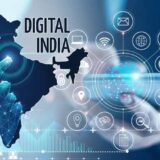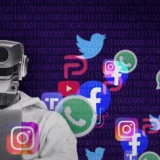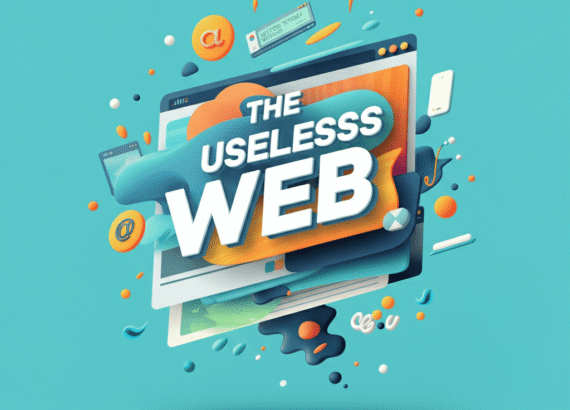The Digitization of Education, Why It Is Important?
The digitization of education has become an increasingly prevalent and transformative phenomenon in recent years. With the rapid advancement of technology, digital tools and platforms have revolutionized the way education is delivered, accessed, and experienced. From online learning platforms to interactive multimedia tools, the integration of digital technology in education has opened up new possibilities for enhancing access, flexibility, and engagement in the learning process. This article explores the benefits, challenges, and future prospects of educational digitization, as well as strategies for successful implementation.
1. Introduction: The Growing Role of Digital Technology in Education
The Evolution of Digital Technology in Education
From dusty chalkboards to interactive whiteboards, education has come a long way. Over the years, digital technology has infiltrated classrooms, transforming the way we teach and learn. Gone are the days of overhead projectors and handwritten notes; today, we have a plethora of digital tools at our disposal.
Importance of Digitization for Educational Institutions
With the rapid advancement of digital technology, it has become imperative for educational institutions to jump on the digitization bandwagon. Why? Because it offers a myriad of benefits that can enhance the educational experience for both students and educators. From breaking down barriers to providing personalized learning, digitization has the power to revolutionize education as we know it.

2. Benefits of Digitization in Education: Enhancing Access and Flexibility
Breaking Barriers: Overcoming Geographical and Socioeconomic Constraints
One of the greatest advantages of digitization in education is its ability to break down barriers. Geographical limitations no longer restrict access to quality education. With online learning platforms, students from remote areas can now access courses from renowned institutions. Moreover, digitization helps bridge the socioeconomic divide by providing equal opportunities to students of all backgrounds.
Personalized Learning: Adapting Education to Individual Needs
Every student has unique learning needs and preferences. Digitization allows for personalized learning experiences, catering to individual strengths and weaknesses. Adaptive digital tools can assess a student’s progress and customize content accordingly, ensuring optimal learning outcomes. With digitization, education becomes a tailored suit, rather than a one-size-fits-all approach.
Flexible Learning Environments: Anytime, Anywhere Education
Gone are the days of rigid schedules and physical classrooms. Digitization brings flexibility to learning, allowing students to access educational resources anytime, anywhere. Whether it’s watching recorded lectures at 2 a.m. or studying on the go, digital platforms enable students to tailor their learning to fit their lifestyle. It’s education without boundaries or constraints.
3. Digital Learning Tools and Platforms: Transforming the Classroom Experience
Interactive Multimedia Tools: Engaging and Motivating Students
Raise your hand if you’ve ever dozed off during a dull lecture. We’ve all been there. But digitization brings a breath of fresh air to the classroom with interactive multimedia tools. From immersive videos to educational games, these tools engage and motivate students, making learning an enjoyable experience. Goodbye boredom, hello excitement!
Online Learning Management Systems: Streamlining Course Administration
Managing courses and assignments can be a logistical nightmare. But fear not, for online learning management systems are here to save the day. These platforms streamline course administration, allowing educators to upload resources, communicate with students, and assess their progress. With digitization, administrative tasks no longer steal valuable teaching and learning time.
Virtual Reality and Augmented Reality: Immersive Educational Experiences
Imagine studying the pyramids of Egypt without leaving your classroom or dissecting a frog without the smell. Virtual reality and augmented reality technologies make these experiences possible. By transporting students to virtual worlds and overlaying digital information onto the real world, digitization enriches education with immersive and hands-on learning experiences.

4. Challenges and Barriers: Addressing the Digital Divide in Education
Access and Connectivity: Bridging the Digital Divide
While digitization holds immense potential, it also brings forth challenges. One of the biggest hurdles is the digital divide, where not all students have equal access to technology and reliable internet connectivity. To bridge this gap, it is crucial for governments and institutions to provide necessary resources and infrastructure, ensuring that no student is left behind.
Digital Literacy: Equipping Educators and Students with Necessary Skills
Embracing digitization requires digital literacy, both for educators and students. It is essential for educators to be proficient in using digital tools and platforms to effectively deliver content. Likewise, students need to be equipped with digital literacy skills to fully utilize and navigate the digital learning landscape. Training and support programs play a crucial role in empowering all stakeholders.
Privacy and Security Concerns: Safeguarding Data in Educational Settings
With the increasing digitization of education, privacy and security concerns come to the forefront. Safeguarding student data and ensuring their online safety is of utmost importance. Educational institutions must implement robust security measures and adhere to strict privacy policies to protect sensitive information. It is essential to find a balance between reaping the benefits of digitization while prioritizing data privacy and security.
With the digitization of education, we have the power to unlock a world of possibilities. By embracing digital technology, educational institutions can provide enhanced access, flexibility, and personalized learning experiences. However, we must also address the challenges that come along, ensuring equality, digital literacy, and data privacy. So, let’s embrace the digital revolution and make education more engaging, accessible, and future-ready!

5. The Human Touch in a Digital World: Balancing Technology and Personal Interaction
The Role of Educators in the Digital Era: Adapting and Thriving in the Change
In conclusion, the digitization of education holds immense potential for improving educational outcomes and transforming learning experiences. By leveraging digital tools, platforms, and data analytics, educators can personalize instruction, enhance access to education, and foster a more flexible and immersive learning environment. However, it is crucial to address the challenges and barriers, such as the digital divide and privacy concerns, while also staying abreast of emerging trends and possibilities in educational digitization. By embracing and effectively implementing digital transformation strategies, educational institutions can unlock the full benefits of technology, preparing students for success in the digital era and shaping a brighter future for education.
6. Conclusion
Imagine you have a special box that can help you learn lots of things. This box is called “digitization of education.” It’s important because it makes learning easier and more fun!
In the past, when you went to school, you had to carry heavy books and notebooks. But with digitization, you can have all your books and lessons on a small device, like a tablet or a computer. It’s like having a magic library in your hands!
Digitization also means you can learn from anywhere, not just in a classroom. You can learn at home, in a park, or even while traveling.
Another cool thing about digitization is that it can show you pictures, videos, and interactive games to help you understand things better. It’s like having a friend who explains things in a super fun way!
When you use digitization, you can also connect with other kids who are learning the same things as you. You can talk to them, share ideas, and even work on projects together. It’s like having a big group of friends who love learning!
So, the digitization of education is important because it makes learning easier, more fun, and helps you connect with others. It’s like having a magical box that opens up a whole world of knowledge just for you!

FAQ
1. How does digitization benefit education?
Digitization in education brings several benefits. It enhances access and flexibility, allowing students to learn anytime and anywhere. It also enables personalized learning experiences tailored to individual needs and preferences. Additionally, digitization offers interactive tools and platforms that engage and motivate students, making learning more enjoyable and effective.
2. What are some challenges in implementing educational digitization?
Implementing educational digitization can present challenges. One major hurdle is the digital divide, which refers to unequal access to technology and internet connectivity. Another challenge is ensuring digital literacy among educators and students to effectively navigate and utilize digital tools. Privacy and security concerns also need to be addressed to safeguard student data in digital environments.
3. How can data analytics and artificial intelligence enhance education?
Data analytics and artificial intelligence (AI) have the potential to revolutionize education. By harnessing educational data, educators can track and analyze student performance, identifying areas for improvement and personalizing instruction. AI-powered tools, such as intelligent tutoring systems, provide personalized guidance and support to students. Additionally, AI can streamline assessment processes, offering timely and meaningful feedback to enhance learning outcomes.
4. What does the future hold for educational digitization?
The future of educational digitization is promising. Emerging trends include gamification and serious games, which make learning more engaging and interactive. Adaptive learning technologies are being developed to cater to individualized learning paths, ensuring personalized instruction for each student. Furthermore, technologies like blockchain have the potential to enhance credential verification and security in the education sector. The possibilities for educational digitization are continually evolving, shaping the future of education.
If you want to build your website in an affordable price contact: www.nextr.in
Read this: What Is Digital India?


















